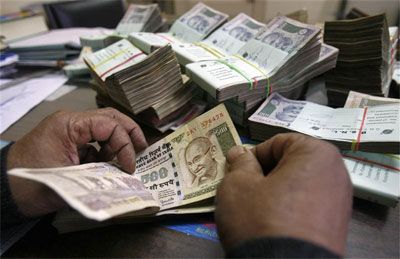Room for rise of up to 2 percentage points, move to help meet higher expenditure need in FY17
 To meet higher expenditure requirement for the next financial year, mainly on account of the Seventh Pay Cmmission’s recommendations and the implementation of the one-rank-one-pay (OROP) pension plan, the Centre could raise the service tax rate by up to two percentage points in the coming Union Budget.
To meet higher expenditure requirement for the next financial year, mainly on account of the Seventh Pay Cmmission’s recommendations and the implementation of the one-rank-one-pay (OROP) pension plan, the Centre could raise the service tax rate by up to two percentage points in the coming Union Budget.
A committee headed by Chief Economic Advisor Arvind Subramanian has recommended a standard rate of 16.9 per cent to 18.9 per cent under the proposed goods and services tax (GST) regime. So, Finance Minister Arun Jaitley has the room to increase the service tax rate from the current 14 per cent to 16 per cent next financial year - to shore up revenue and also prepare the country for a GST regime.
"Discussions and consultations are on; services is an area where we see room, as far as revenue sources are concerned. We do not know how global oil prices will behave next year, so excise duty is an uncertain source,” said a government official who did not wish to be named.
In the current financial year, the government increased the rate of service tax from 12.36 per cent to 14 per cent (from June). It also imposed a Swachh Bharat cess of 0.5 per cent on all services from November 15.
“An increase in service tax rate could be a possibility next year. The government can look at revising the rates further up, as the standard recommended rate for GST is between 16.9 per cent and 18.9 per cent,” said Saloni Roy, senior partner, Deloitte. Besides, the Swachh Bharat cess could be raised from the present 0.5 per cent, she said.
Among other measures for generating additional revenue, the government has raised excise duty on diesel and petrol six times since November 2014; increased clean energy cess; and withdrawn excise duty exemptions for motor vehicles, capital goods and consumer durables.
The increase in excise duty on petrol and diesel, following a sharp fall in global oil prices, gave the government an additional Rs 40,000 crore in revenue in the April-October period this year. In full 2014-15, the Centre had earned an additional Rs 25,000 crore (Rs 250 billion) through this source.
Gautam Khattar, partner (indirect tax), PricewaterhouseCoopers, said service tax increase could be a possibility, but it would not be simple mathematics. “Yes, service tax could be one area to look at for additional revenue next year. But GST also proposes a tax credit for procurement of goods by service providers. So, it is not simple calculation,” he said.
Also, the recommended rate of 16.9 per cent to 18.9 per cent is for standard national GST, which will be divided into Central GST and state GST. These will be decided by the proposed GST council.
The fiscal outlook for 2016-17 looks challenging, given that there will be additional outgo on account of the seventh pay commission’s recommendation of a 23.55 per cent increase in pay and allowances of government employees from January 1, 2016. This is estimated to cost an additional Rs 1.02 lakh crore.
Also, there will be the expenditure associated with the OROP scheme. In the first eight months of the current financial year, the service tax revenue expanded by 25 per cent over a year ago to Rs 1.27 lakh crore, or 61 per cent of the Budget target of Rs 2.09 lakh crore.
Chief Economic Advisor Subramanian said in the mid-year analysis that the government’s commitment to go for further fiscal consolidation - to bring deficit as a percentage of gross domestic product (GDP) down by 40 basis points - needed to be re-assessed on account of factors like the seventh pay commission recommendations and declining nominal GDP growth.
The Centre’s fiscal deficit was projected to come down to 3.5 per cent of GDP in 2016-17 from the targeted 3.9 per cent this current financial year. In the current year, the Centre’s indirect tax mop-up has been robust, seeing 34.3 per cent growth in the first eight months on the back of excise and service tax collections.
However, its direct tax kitty is likely to fall short of the budgeted Rs 7.97 lakh crore by Rs 30,000 crore to Rs 40,000 crore (Rs 400 billion). Even so, the government is confident that it will meet its target of limiting fiscal deficit to 3.9 per cent of GDP this year, without any expenditure cuts.







 © 2025
© 2025